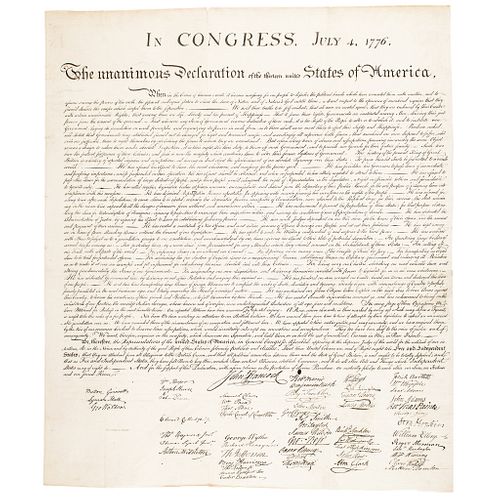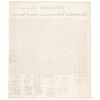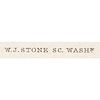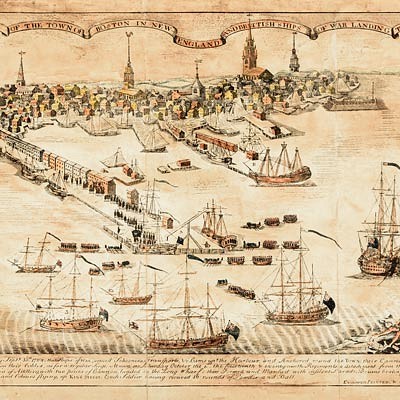DECLARATION OF INDEPENDENCE Original 1843 Peter Force American Archives Printing
Lot 19
Categories
Estimate:
$20,000 - $25,000
Absentee vs Live bid
Two ways to bid:
- Leave a max absentee bid and the platform will bid on your behalf up to your maximum bid during the live auction.
- Bid live during the auction and your bids will be submitted real-time to the auctioneer.
Bid Increments
| Price | Bid Increment |
|---|---|
| $0 | $10 |
| $200 | $20 |
| $300 | $25 |
| $500 | $50 |
| $1,000 | $100 |
| $2,000 | $200 |
| $3,000 | $250 |
| $5,000 | $500 |
| $10,000 | $1,000 |
| $20,000 | $2,000 |
| $30,000 | $2,500 |
| $50,000 | $5,000 |
| $100,000 | $10,000 |
| $200,000 | $20,000 |
| $300,000 | $25,000 |
| $500,000 | $50,000 |
About Auction
By Early American History Auctions
Mar 20, 2021
Set Reminder
2021-03-20 12:00:00
2021-03-20 12:00:00
America/New_York
Bidsquare
Bidsquare : Autographs-Colonial-Political-Americana
https://www.bidsquare.com/auctions/early-american-history-auctions/autographs-colonial-political-americana-6509
330 Lots of Rare, Historic Autographs, Americana, Civil War Era, George Washington, Abraham Lincoln, Slavery & Black History, Revolutionary War Era, Colonial America, Federal Period, War of 1812, Colonial Currency, Indian Peace Medals & more... Early American History Auctions auctions@earlyamerican.com
330 Lots of Rare, Historic Autographs, Americana, Civil War Era, George Washington, Abraham Lincoln, Slavery & Black History, Revolutionary War Era, Colonial America, Federal Period, War of 1812, Colonial Currency, Indian Peace Medals & more... Early American History Auctions auctions@earlyamerican.com
- Lot Description
Autographs
July 4th, 1776 Rare "Declaration of Independence" From "American Archives" Historic 1843 Peter Force Printing
DECLARATION OF INDEPENDENCE. (1843) Peter Force Printing, From the Original Plate with "W.J. Stone SC. WASHn." Imprint, Crisp Rice Paper, Choice Extremely Fine.
An opportunity to obtain one of the best and earliest original copies of America's greatest historic Document. This is an original beautiful and impressive crisp Peter Force Printing rice paper copy of The Declaration of Independence, measuring 30" high x 25.5" wide. It is one of the nicest examples we have offered, having been removed from its original "American Archives" book to accomodate its display. Slight creases in the rice paper from its original folded position within the book attests to its full absolute authenticity. It has the essential "W.J. Stone SC. WASHn." plate imprint at the lower left. An impressive, very clean and attractive specimen.
In 1843, Peter Force used the original Stone Copperplate to print additional copies of the Declaration of Independence on rice paper for inclusion in Volume I of his multi-volume book "American Archives." Congress authorized up to 1,500 copies of that book to be printed, but subscriptions fell far short of that number. The actual number of copies printed is unknown, with best estimates of about 500 copies made. All examples of the rice paper Declaration were meant to be folded for insertion in the inside front cover of Volume I of the Fifth Series, and by now, most have been removed. It is not known how many of the rice paper copies could have survived. Speculation suggests estimates of fewer than a third of this printing have survived, in varying states of preservation.The Stone and Peter Force copies represent a double-edged sword. Certainly, they allowed additional people and institutions to obtain an identical facsimile of this most beloved of all historic American documents, but Stone's Wet-Ink transfer process contributed to the deterioration of the original signed copy of the Declaration. Parchment does not respond well to water. The unfortunate result is that the Declaration of Independence, now on display in Washington, DC, is a rather sad-looking, old faded document.
Conversely, the Stone and Force printings that have survived are much nicer in appearance and they generally retain the fresh appearance with which the original was once endowed. The only items worthy or mention on this current example are a small pencil eraser size spot of original ink, as made, between the bottom text and above Robert Morris on the front, not touching or affecting any text. The blank reverse has some scattered archival reinforcements to the fine paper folds and another nearly invisible, nicely sealing one fine 3" split at Lewis Morris and Rich Stockton. The last example we offered was Ex: EAHA Auction, August 26, 2016, Lot 34 where is sold then for $24,000 and was reconsigned to our June 27, 2020 Auction Lot 11, Framed, graded EF, selling at $28,800. This current offering is excellent for display, ready to be matted and framed to the new owner's taste.
In 1823, Congress authorized the production of facsimile copies of the Declaration of Independence. Previous writers have claimed that this was done because the document was deteriorating rapidly, but another reason may have been the demand for copies of the document by some of the aging surviving original signers and others. John Quincy Adams, then Secretary of State, oversaw the project. Noted engraver, William J. Stone, was commissioned to use a new Wet-Ink transfer process to create a copper-plate from which facsimile copies could then be made. By wetting the original document, some of the original ink was transferred to the copper-plate, which was then used for printing. Stone printed 201 copies on parchment (or vellum, the same type of material on which the original was handwritten).He kept one for himself (this copy now resides in the Smithsonian), and other copies were distributed to Thomas Jefferson, President James Monroe, members of Congress, surviving original Signers, various colleges and universities, and others. Of the original 201 copies, only 31 examples are currently known to exist, 19 of which are permanently impounded in museums. The remaining dozen vellum examples rarely are offered for sale and today typically bring $800,000 and more! - Shipping Info
-
Early American provides in-house worldwide shipping. Please contact us directly if you have questions about your specific shipping requirements.
-
- Buyer's Premium



 EUR
EUR CAD
CAD AUD
AUD GBP
GBP MXN
MXN HKD
HKD CNY
CNY MYR
MYR SEK
SEK SGD
SGD CHF
CHF THB
THB













